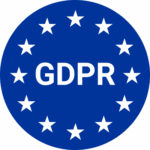
Key Takeaways
The pharmaceutical industry is leveraging AI to accelerate innovation and efficiency across the entire value chain.
- What it does: In drug discovery, AI models can identify promising compounds far faster than traditional methods. During clinical trials, AI helps optimize patient recruitment and monitor data. It also transforms manufacturing by predicting maintenance needs and optimizing supply chains.
- The business impact: By automating these complex, data-driven processes, AI is helping pharmaceutical companies bring life-saving therapies to
The narrative surrounding AI in pharma is captivating. We hear stories of algorithms discovering novel drug candidates in weeks and genomic analysis platforms identifying therapeutic targets at a speed once unimaginable. This focus on the lab is both exciting and justified, but it is dangerously incomplete. It overlooks the immense operational and regulatory friction that exists outside the R&D environment—the place where brilliant scientific discoveries can stall for years in a quagmire of manual processes, overwhelming documentation, and complex compliance mandates.
This is where the real, immediate transformation for AI in pharma is waiting. The most significant gains in speed-to-market and operational efficiency are not found in replacing scientists, but in empowering the clinical, regulatory, and pharmacovigilance teams who navigate the labyrinthine path from trial to patient. This guide is for pharmaceutical and biotech leaders who are ready to look beyond the lab and re-engineer the core operational engine of their business.
It’s time to move past the failures of brittle automation and the unacceptable risks of generic AI. A new paradigm, built on natural language process automation, allows your most valuable experts to automate their most complex workflows simply by describing them in English. This isn’t about the science of finding the next molecule; it’s about building the secure, compliant, and intelligent engine that brings it to the world.
The Hidden Drag on Pharmaceutical Innovation
Beneath the surface of every clinical breakthrough is a mountain of operational work. This work-spanning clinical trials, regulatory affairs, and post market surveillance- is the circulatory system of any pharmaceutical company. For decades, it has been managed through a combination of manual effort and first-generation automation technologies that are ill-suited for the dynamic, high-stakes environment of pharma. This is the central challenge that the strategic use of AI in the pharmaceutical industry must solve.
Traditional Robotic Process Automation (RPA) was an early attempt at a solution. However, these bots are fundamentally rigid. They are programmed to follow a script of clicks and keystrokes, making them incredibly fragile. A minor update to a clinical trial management system (CTMS) or a regulatory portal can break an entire workflow, creating a constant maintenance burden on IT. This is not a sustainable model for artificial intelligence in pharma.
More recently, generic AI platforms have emerged, but they introduce a critical risk: hallucination. In an industry where precision and accuracy are paramount, an AI that can fabricate data or misinterpret a safety report is a non-starter. This makes the adoption of generic AI in pharmaceuticals for core processes a significant compliance risk. These limitations have made it clear that a new approach is needed—one that combines intelligence with absolute governance.
AI That Speaks the Language of Pharma
The next evolution of AI in pharma is not about writing more robust code; it’s about eliminating the need for traditional programming altogether. The future is natural language process automation, where the deep process knowledge of your clinical, regulatory, and safety experts is captured and executed in plain English.
Imagine a clinical operations manager automating the complex process of site payments by simply describing the validation rules and approval workflows. Picture a regulatory affairs specialist creating an automated process to assemble a submission dossier by listing the required documents and data sources. This is the core principle behind a new class of enterprise AI.
This isn’t just a user-friendly interface layered on top of old technology. It is a fundamentally different approach, powered by a neurosymbolic AI architecture that combines the contextual understanding of large language models with a symbolic reasoning engine. This is a critical distinction for artificial intelligence in pharma. The reasoning engine ensures that processes are followed with logical precision, by design, eliminating the risk of AI hallucinations. This creates a system that is not only intelligent but also auditable, verifiable, and secure—the table stakes for any serious application of AI in pharma.
Re-Engineering the Core Engine of Pharmaceutical Operations
A true strategy for AI in pharma must focus on the high-friction, document-intensive processes that create the most significant bottlenecks. By applying natural language automation to these core functions, organizations can unlock immediate and substantial gains in efficiency and compliance.
Optimizing Clinical Trial Operations
The administrative burden of clinical trials is immense. A natural language automation platform can transform this landscape. For example, it can automate the validation of data from various clinical trial sites, cross-referencing information in unstructured documents like patient records and lab reports against the trial protocol. This intelligent document processing goes far beyond simple OCR, understanding context and flagging discrepancies for human review. This is a prime example of the practical use of AI in the pharmaceutical industry.
Streamlining Regulatory Compliance and Submissions
The path to regulatory approval is paved with documentation. Assembling a dossier for submission to the FDA or EMA is a monumental task. The use of artificial intelligence in pharma here is transformative. An automation described in English can orchestrate the entire process, pulling trial data from the CTMS, sourcing manufacturing records from the ERP, and compiling safety reports, ensuring everything is correctly formatted and cross-referenced.
Crucially, because the automation is written in English, it serves as its own audit trail. Regulators and internal compliance teams can read the process in plain language and understand its logic, creating a level of transparency that is impossible with traditional code. This is one of the most powerful benefits of AI pharma.
Enhancing Pharmacovigilance and Safety Reporting
Post-market safety monitoring requires sifting through vast amounts of data from various sources to identify adverse events. This is another area where AI in pharmaceuticals can have a profound impact. An intelligent system can monitor intake channels—from emails to call center logs—and automatically identify, classify, and route potential adverse event reports to the correct safety physician for review. This accelerates response times and ensures a complete, auditable record of every reported event, a cornerstone of effective AI in pharma.
The Strategic Benefits of an Intelligent Operational Backbone
Adopting this new model of AI in pharma delivers strategic advantages that resonate directly with the priorities of C-suite leaders and CIOs. The benefits of AI pharma extend far beyond simple cost savings.
- De-Risking Operations: By eliminating the risk of AI hallucinations and creating a perfectly auditable system of record, this approach strengthens the compliance posture of the entire organization.
- Accelerating Time-to-Market: By automating the administrative and regulatory bottlenecks, companies can shorten the cycle time from trial completion to market availability, a direct and significant revenue driver.
- Preserving Institutional Knowledge: Critical process knowledge is no longer trapped in the minds of a few key experts. It is codified in English as part of the automated workflow, creating a living, breathing knowledge base for the entire organization.
This operational excellence even extends to commercial functions. For example, the principles of AI in pharma marketing can be applied to automate the rigorous review and approval process for promotional materials, ensuring every claim is cross-referenced against approved clinical data and regulatory guidelines. The application of artificial intelligence in pharma is truly enterprise-wide.
The Way Forward
The future of AI in pharma will be defined by two distinct but connected tracks of innovation: the scientific and the operational. While the search for the next breakthrough molecule continues in the lab, the race to build a more efficient, compliant, and intelligent business engine is happening now. Leaders who pivot their focus to re-engineering their core operational backbone with a new generation of secure, auditable, and business-friendly artificial intelligence in pharma will not only accelerate their current pipeline but also build a lasting competitive advantage for the decade to come.
Discover the Power of Kognitos
Our clients achieved:
- 97%reduction in manual labor cost
- 10xfaster speed to value
- 99%reduction in human error
Beyond drug discovery, the primary use of AI in the pharmaceutical industry is to automate and optimize core operational processes. This includes managing clinical trial data, assembling regulatory submission dossiers, automating pharmacovigilance and safety reporting, and ensuring supply chain integrity.
The key benefits of AI pharma include a significant reduction in operational costs and manual errors, faster time-to-market for new therapies, a stronger and more transparent compliance posture, and the preservation of critical institutional knowledge in an auditable format.
The main challenges are ensuring absolute accuracy and eliminating the risk of AI hallucinations, navigating complex regulatory and compliance requirements, and overcoming the limitations of brittle, first-generation automation technologies like RPA. A successful AI in pharma strategy must address these directly.
Concrete examples include: automating the reconciliation of clinical trial site payments; intelligently processing unstructured adverse event reports from emails; automatically assembling and validating documents for a New Drug Application (NDA) submission; and automating quality control checks in the manufacturing supply chain.








